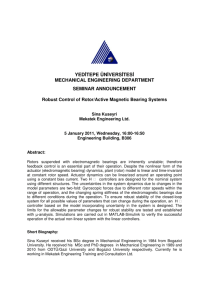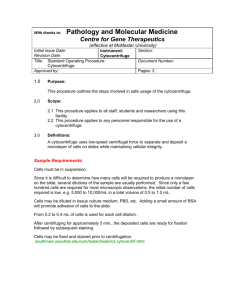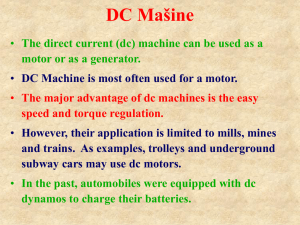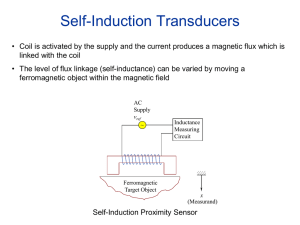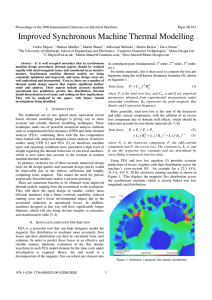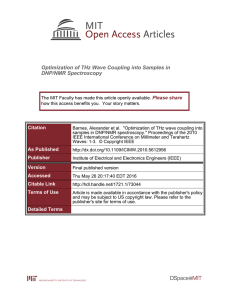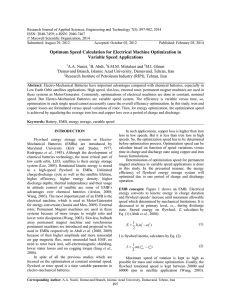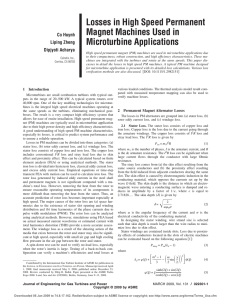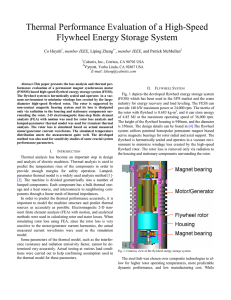IV. LOW TEMPERATURE PHYSICS
advertisement
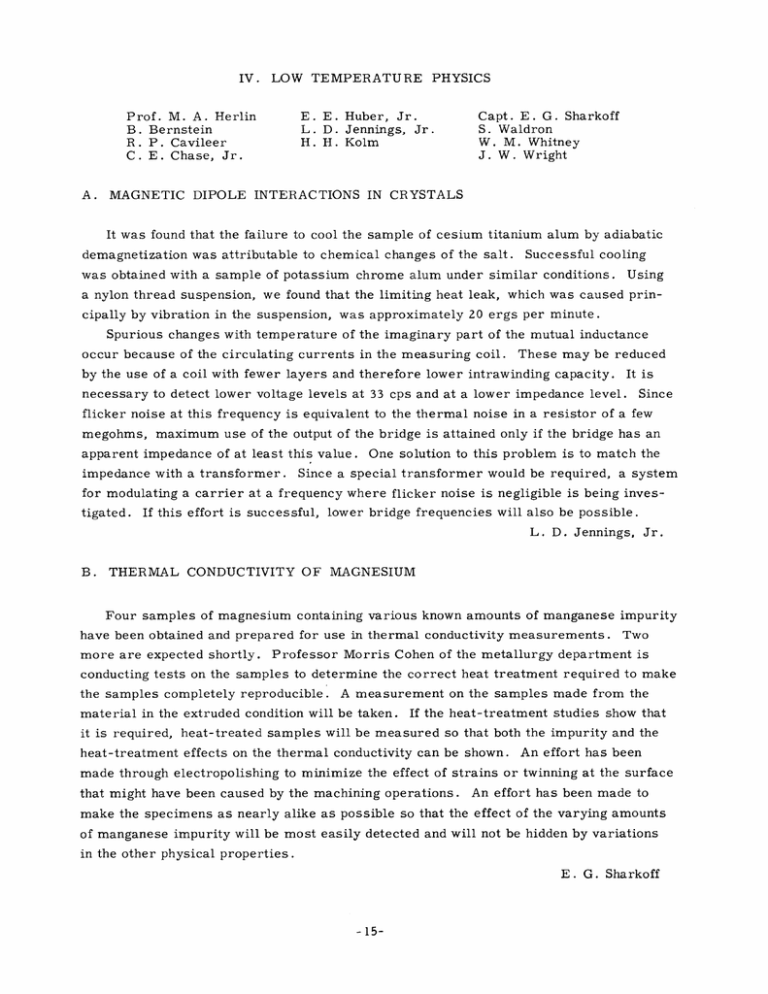
IV. LOW TEMPERATURE E. E. Huber, Jr. L. D. Jennings, Jr. H. H. Kolm Prof. M. A. Herlin B. Bernstein R. P. Cavileer C. E. Chase, Jr. A. PHYSICS Capt. E. G. Sharkoff S. Waldron W. M. Whitney J. W. Wright MAGNETIC DIPOLE INTERACTIONS IN CRYSTALS It was found that the failure to cool the sample of cesium titanium alum by adiabatic demagnetization was attributable to chemical changes of the salt. Successful cooling was obtained with a sample of potassium chrome alum under similar conditions. Using a nylon thread suspension, we found that the limiting heat leak, which was caused principally by vibration in the suspension, was approximately 20 ergs per minute. Spurious changes with temperature of the imaginary part of the mutual inductance occur because of the circulating currents in the measuring coil. These may be reduced by the use of a coil with fewer layers and therefore lower intrawinding capacity. It is necessary to detect lower voltage levels at 33 cps and at a lower impedance level. Since flicker noise at this frequency is equivalent to the thermal noise in a resistor of a few megohms, maximum use of the output of the bridge is attained only if the bridge has an apparent impedance of at least this value. impedance with a transformer. One solution to this problem is to match the Since a special transformer would be required, a system for modulating a carrier at a frequency where flicker noise is negligible is being investigated. If this effort is successful, lower bridge frequencies will also be possible. L. B. D. Jennings, Jr. THERMAL CONDUCTIVITY OF MAGNESIUM Four samples of magnesium containing various known amounts of manganese impurity have been obtained and prepared for use in thermal conductivity measurements. more are expected shortly. Two Professor Morris Cohen of the metallurgy department is conducting tests on the samples to determine the correct heat treatment required to make the samples completely reproducible. A measurement on the samples made from the material in the extruded condition will be taken. If the heat-treatment studies show that it is required, heat-treated samples will be measured so that both the impurity and the heat-treatment effects on the thermal conductivity can be shown. An effort has been made through electropolishing to minimize the effect of strains or twinning at the surface that might have been caused by the machining operations. An effort has been made to make the specimens as nearly alike as possible so that the effect of the varying amounts of manganese impurity will be most easily detected and will not be hidden by variations in the other physical properties. E. G. Sharkoff -15- (IV. C. LOW TEMPERATURE THERMOELECTRIC PHYSICS) FORCES The speed of taking data has been increased substantially by the installation of resistance thermometers to supplement the helium gas thermometer. The latter is used to calibrate the former. The time of about forty-five minutes per point, consumed by waiting for equilibrium of the oil thermometer, has been reduced to about five or ten minutes per point. A curve for the magnesium-lead junction shows an almost constant thermoelectric power of 4.47 .v per degree. The fact that this value does not appear to vanish at low temperatures suggests its possible use as a thermometric element. The role of impurities, especially manganese which causes the resistance minimum effect, will be investigated. M. A. D. Herlin STUDY OF THERMAL PROPERTIES OF SOLIDS MEASURED BY VARIABLE STATE TECHNIQUES In the Quarterly Progress Report, October 15, 1952, we announced a decision to change from pulsed to sinusoidal excitation of the heat flow in the metallic rod whose thermal properties are to be measured. These measurements have been performed on two samples of magnesium and the results are in preparation for publication. S. Waldron E. THE VISCOSITY OF LIQUID HELIUM The frictionless magnetic bearing described in the Quarterly Progress Report, January 15, 1953, has been completed and operated successfully in air at room temperature. It was found expedient to replace the solid iron rotor by one of identical shape but constructed in the manner indicated in Fig. IV-1. The insertion of a central section of dielectric makes it possible to locate the sensing coil of the bearing servomechanism below the upper iron part, and thus leave the lower extremity of the rotor accessible for stabilization by the permanent magnet and the eddy current disks. These copper disks, together with the two at the upper extremity, provide adequate damping of lateral motion and pendulation, while vertical motion is damped by suitable derivative control in the servomechanism which operates the levitation solenoid. The dielectric portion of the rotor contains iron asymmetries by means of which rotation is timed with the aid of the two vertical sensing coils shown. The positionsensing coil and these rotation-sensing coils are tuned to oscillate at about 5 and 7 Mc/sec, respectively, and are highly sensitive to the proximity of iron inasmuch as it -16- (IV. LOW TEMPERATURE PHYSICS) LEVITATION SOLENOID SOLENOID CORE COPPER DAMPING DISKS UPPER IRON PART OF ROTOR POSITION SENSING COIL ROTATION SENSING COILS LOWER IRON PART OF ROTOR COPPER DAMPING DISKS Fig. IV-1 Schematic view of liquid helium viscometer. modifies both the inductance and losses of the tuned circuits. The rotor is timed continuously by means of an automatic time recorder which may be tripped at intervals corresponding to an arbitrary number of revolutions. The value for the viscosity of air obtained during the first operation of this instrument agrees in order of magnitude with known values. Determination of the absolute value of viscosity requires knowledge of the moment of inertia of the rotor, which has not been determined as yet. The crude rotor presently used will have to be replaced by one made to more stringent tolerances and capable of withstanding the required temperature changes. H. H. Kolm -17-
